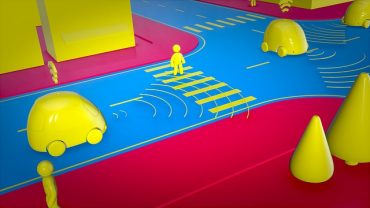
Common front-line worker tasks like data exploration, root cause analysis, and turnaround planning can all be helped with a suitably implemented Gen AI solution.
Process manufacturers such as those in the chemical, oil and gas, and other fields must eliminate product inconsistencies from batch to batch and product run to production run. And like other manufacturers, they face pressures to deliver products, as promised in sales agreements, of a specific quality on schedule.
Something as simple as a machine out of calibration or an overheating motor can degrade the quality of the output or disrupt operations. As such, plants must operationalize all processes. Various front-line workers need to know when things go wrong and be able to quickly address any issues.
In many cases, these workers are overwhelmed with an overabundance of data in the form of equipment manuals and logs, maintenance records, and more. Increasingly, industrial manufacturers are looking to Generative AI (Gen AI) for help.
Specifically, there are several common tasks or workflows that are rife with challenges that Gen AI can address. Let’s look at some of these workflows and see how Gen AI might be applied to help those workers.
Data exploration
Front-line workers in the process industry often have to deal with a large volume of data from various sources, such as sensors, control systems, manuals, maintenance history, past work orders, and operational logs. Finding relevant information from these sources can be overwhelming and time-consuming.
Additionally, the data from these sources can be highly complex and technical, requiring specialized knowledge to interpret correctly. This complexity can make it difficult for front-line workers to quickly understand and act on the data. And in many cases, the workers find they must not only find the information they need, but then they must integrate or assimilate data from different sources and in different formats to understand what’s going on so that they can make an informed decision as to what to do.
How Gen AI can help with data exploration
Gen AI can help search large volumes of data from different sources. It might be used to filter, sort, and highlight relevant information. For instance, if a worker wants to know what’s the operating range for a certain piece of equipment and how often that equipment was out of operating range, Gen AI might be used to search the OEM specifications, find the operating range, and then compare that to an operational log to see how often the equipment goes out of range.
Gen AI might also be used to integrate and interpret data from various sources, providing a more comprehensive and coherent view of a situation. Or it might be called on to quickly summarize information, so the worker does not need to read or search the entire set of documents or datasets.
See also: Overcoming Gen AI Adoption Obstacles Across Process Industries
Root cause analysis
Process manufacturers often experience a number of different types of problems in their operations. A piece of equipment on a production line might have performance problems, an output batch’s quality might dip, or many other things might happen. Getting to the root cause of the problem is no easy matter, given the complexity of the equipment and processes in use.
Making matters worse is the fact that many process industries make use of complex systems with numerous interconnected components. Identifying the root cause of a problem in such a system can be very difficult, especially if the issue is intermittent or has multiple contributing factors.
How Gen AI can help with root cause analysis
Gen AI can be used in a number of ways to help workers carry out root cause analysis of production problems. Gen AI might first be used to automate the data collection and analysis tasks needed to determine the source of a problem.
It might then be used to identify patterns and correlations that might not be apparent to the human operator. That can be especially useful in pinpointing the root causes in systems with numerous variables and interdependencies.
Once an issue is identified, Gen AI might then be tasked with further analyzing trends and anomalies to predict potential failures. Such insights can be used for preventive maintenance and early problem detection. Finally, Gen AI might be used to update and organize records so that if a similar issue arises in the future, workers can benefit from the existing root cause analysis and do not have to start from scratch.
Turnaround planning
Turnarounds typically involve shutting down an entire plant or specific areas to update processes, equipment, and more. Naturally, manufacturers want to complete a turnaround as fast as possible to keep revenues coming in. However, given the complexity and interdependencies within a production line and process, moving too fast can introduce problems once things are operational again.
So, turnaround planning is essential. Those responsible must manage staff availability to swap old equipment out and new equipment in. The work often involves working with contractors and perhaps new raw materials and their suppliers. New equipment and technologies must be properly integrated, taking performance and safety into account.
How Gen AI can help with turnaround planning
Gen AI might be used in a number of ways to help with turnaround planning. It might be used to help coordinate schedules and optimize the sequence of activities. It might also be used to manage both human and equipment resources.
A more sophisticated level of use would have Gen AI analyze past incidents and data to predict potential safety risks and suggest preventive measures before new processes and equipment are put into place. It might also help ensure compliance with regulatory standards by keeping track of updates and integrating them into the planning process.
A final word on Gen AI for front-line process industry workers
Manufacturing operations in process industries are complex. Maintaining equipment, getting to the heart of problems, and updating facilities to incorporate new technologies or produce new products are data-intensive, time-consuming tasks.
Gen AI has the potential to help in these and other areas. It can be used to search large volumes of data from multiple sources, summarize reports and documents, analyze and correlate disparate data, and identify and correlate anomalies and interdependencies. All of these functions save time for front-line workers and provide them with the insights needed to do their jobs efficiently.






